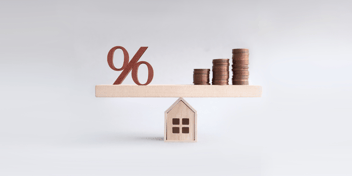US Residential Real Estate Market: A Decade After the Financial Crisis

Looking back, any fears of a potential new recession are dwarfed by the impact the financial recession of 2007–2009 had and still has on the U.S. economy. While home prices have recovered rather well over the last decade, aided by increasing demand for homeownership (especially in the millennial generation), the real estate market may have come to an inflection point that is concerning to market professionals and economists alike.
People are still stitching up the wounds inflicted by the predatory lending practices from a decade ago, with some unable to fully heal. Federal regulation and oversight have led to a new level of accountability in terms of the mortgage origination process. However, the secondary market is again beginning to show an increased tolerance for riskier loan profiles, begging the question: are we going to repeat the same mistakes that led us to one of the worst financial crises in history?
The Secondary Mortgage Market & Loan Servicing
Often referred to as simply the “secondary market” by industry professionals and experts, the name may hold little significance (although it should) to a layperson that just makes their monthly housing payment each month to their local area bank or credit union.
Defined as a market where investors buy and sell securities, deals on the secondary market can be thought of as a step removed from the initial offering or transaction of a particular asset. For instance, when you close on your mortgage, your loan is owned by the bank or private lender that originated it. However, the majority of mortgages originated today are sold into the secondary market, where your loan is purchased by aggregators, and then sold to investors. The two biggest and known aggregators are the Federal National Mortgage Association and Federal Home Loan Mortgage Corporation, also known as Fannie Mae and Freddie Mac.
Fannie and Freddie set requirements for what loans they are willing to purchase based on a variety of criteria (although investors can have their own overlays), referred to as conforming loans. During the financial crisis, Fannie and Freddie, as aggregators, set the bar pretty low (that is an understatement) with their willingness to purchase thousands of subprime mortgages, bundle them, and ship them to investors in the form of mortgage-backed securities (MBS). Blame should also be placed on realtors and originators who were earning high commissions and incentives for closing deals regardless of a borrower’s ability to repay.
It’s important to note that when a loan is sold into the secondary market, the rights to service that loan (meaning who you would make your payments to as a borrower) will also most likely change. Individual and institutional investors who buy and sell these loans work with a wide range of loan servicers, selling them the rights to service your loan in exchange for additional fees. As a borrower, you may never know who actually owns your loan unless you research it carefully.
Once a borrower starts missing payments, it is up to the new servicer to relay information to the owner of the mortgage note. The owner then chooses to either work with the borrower, sell the loan again, or start foreclosure proceedings (usually the latter). What you thought was the beginning of a friendly relationship with your local community bank turns into a whirlwind of owner and servicer changes. Now you are dealing with a servicer in a call center in another state who sees you as yet another number on their computer screen.
Foreclosures: Then and Now
There is an unchecked level of detachment between the secondary market and a homeowner. Should a mortgage fall into distress, lenders are becoming less interested in working with borrowers, but rather look to foreclosure as the most expedient option. The borrower must, in most cases, simply accept this without recourse. Alternatives to foreclosure are limited and are not often examined due to higher costs to the lender. Instead of working with borrowers to turn the loan around and keep them in their homes, impersonal lenders force a process that can take upwards of 800 days, on average, to complete. What’s worse, many of the borrowers that are now entering into foreclosure are still suffering from the financial crisis; victims of predatory lending practices who have poorer credit and have loans with higher interest rates.
In the first quarter in 2009, one in every 138 US households received a foreclosure filing. Compare that to the foreclosure rate in Q1 2019, where one in 2,312 households received a foreclosure filing, and it seems that foreclosure rates are beginning to improve. What those numbers do not show is that lending guidelines today are lightening.
Offerings, such as Freddie’s HomePossible and Fannie’s HomeReady programs, allow borrowers to put less money down in order to buy a new home. Acceptable debt-to-income ratios have now increased up to a 50% tolerance. While many files don’t reach that ceiling, 30% of files in 2018 purchased by Freddie and Fannie had debt-to-income ratios of 43% or higher indicating a higher tolerance for riskier loans. Couple this with the increasing issuance of property inspection waivers and one can see that trends in the housing market may be returning to their former pre-recession days.
As the secondary market continues down this slippery slope, fueled by several of the same factors that led us down this path once before, borrowers should educate themselves on the foreclosure process. There are many misconceptions about the process that borrowers should be aware of and alternatives to foreclosure they should consider as foreclosure rates begin to rise. Borrowers, and investors alike, should prepare themselves as the upcoming threat of yet another recession hangs on the coattails of its predecessor.
Sources if you would like to read more …
Eisen, B. (2019, May 13). Fannie and Freddie Back More Mortgages of Those Deeply in Debt. Retrieved May 16, 2019, from https://www.wsj.com/articles/fannie-and-freddie-back-more-mortgages-of-those-deeply-in-debt-11557739801
Finkelstein, B. (2018, May 22). 12 housing markets where foreclosures are picking back up. Retrieved May 16, 2019, from https://www.nationalmortgagenews.com/slideshow/12-housing-markets-where-foreclosures-are-picking-back-up
Folger, J. (2019, March 12). The 6 Phases Of A Foreclosure. Retrieved May 16, 2019, from https://www.investopedia.com/financial-edge/0510/the-6-phases-of-a-foreclosure.aspx
U.S. Foreclosure Activity Decreases 15 Percent in Q1 2019 to Lowest Levels Since Q1 2008. (2019, April 17). Retrieved May 19, 2019, from https://www.attomdata.com/news/market-trends/attom-data-solutions-q1-2019-u-s-foreclosure-market-report/


